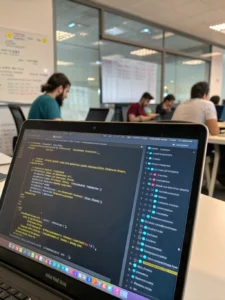Crypto Regulation: What’s Next?
Crypto Regulation: What's Next?
Introduction
Is the crypto industry approaching its "coming-of-age" moment with regulation? With over 420 million cryptocurrency users worldwide as of 2023, governments are scrambling to establish comprehensive crypto laws while maintaining the innovation that has fueled this $1.7 trillion market. The regulatory landscape for cryptocurrencies and blockchain technology remains fragmented, with different jurisdictions taking vastly different approaches to crypto compliance requirements. As an investor, developer, or enthusiast, understanding these evolving crypto laws is no longer optional—it's essential for navigating this rapidly changing ecosystem.
The Current Regulatory Ingredients
The global regulatory framework for cryptocurrencies resembles a complex recipe with varying ingredients depending on where you look:
- Securities laws – Determining whether tokens qualify as securities (using tests like the Howey Test in the US)
- Anti-Money Laundering (AML) provisions – Requirements for KYC procedures and transaction monitoring
- Tax reporting frameworks – Classification of crypto assets for taxation purposes
- Consumer protection measures – Safeguards against fraud and misleading practices
- Licensing requirements – Operational permits for exchanges and other service providers
- Stablecoin regulations – Special provisions for fiat-pegged cryptocurrencies
Substitution possibilities: Some jurisdictions allow regulatory sandboxes as alternatives to full compliance, while others offer exemptions for certain types of tokens or activities below specific thresholds.
Timing
The implementation timeline for comprehensive crypto regulation varies significantly by region:
- Preparation phase: 2-3 years of consultation and draft proposals (already underway in most major economies)
- Implementation phase: 1-2 years of gradual rollout (currently happening in the EU with MiCA)
- Compliance adjustment period: 6-12 months for industry adaptation
Total expected time until global regulatory clarity: 3-5 years, which is approximately 30% faster than what we saw with internet regulation in the 1990s.
Step-by-Step Regulatory Evolution
Step 1: Categorization of Digital Assets
Regulators worldwide are first determining how to categorize various crypto assets. The EU's Markets in Crypto-Assets (MiCA) regulation has created three distinct categories: asset-referenced tokens, e-money tokens, and other crypto-assets. This classification determines which specific rules apply to each asset type.
Step 2: Exchange and Custody Provider Registration
Cryptocurrency exchanges and custody providers are being brought under regulatory supervision. In the US, the SEC and CFTC are increasingly asserting jurisdiction, while jurisdictions like Singapore require digital payment token services to be licensed under the Payment Services Act.
Step 3: Implementation of AML/CFT Requirements
Financial Action Task Force (FATF) recommendations are being adopted globally, requiring Virtual Asset Service Providers (VASPs) to implement the "Travel Rule," verifying the identity of transaction participants for transfers above certain thresholds.
Step 4: Investor Protection Frameworks
Regulators are establishing disclosure requirements and investor protection mechanisms similar to traditional financial markets, with particular focus on retail investors who may lack technical understanding of crypto assets.
Step 5: Cross-Border Regulatory Coordination
International bodies like the Financial Stability Board (FSB) are working to harmonize approaches to prevent regulatory arbitrage while enabling innovation in blockchain technology.
Compliance Information
The compliance burden for crypto companies is substantial:
- Average cost of regulatory compliance: $1.5M annually for mid-sized crypto businesses
- Required personnel: Typically 10-15% of staff dedicated to compliance functions
- Documentation requirements: 30+ distinct types of compliance documents
- Reporting frequency: Monthly, quarterly, and annual reports to various authorities
Alternative Regulatory Approaches
Several jurisdictions are experimenting with more innovation-friendly regulatory frameworks:
- Principles-based regulation – Focus on outcomes rather than prescriptive rules (UK approach)
- Regulatory sandboxes – Controlled environments for testing new business models (Singapore model)
- Self-regulatory organizations – Industry-led compliance frameworks with regulatory oversight (Japan's approach)
- Decentralized compliance tools – Blockchain-based solutions for automated regulatory reporting
These alternatives aim to balance investor protection with technological advancement.
Implementation Suggestions
For crypto companies navigating this evolving landscape:
- Proactively engage with regulators in your jurisdiction rather than waiting for enforcement actions
- Implement "compliance by design" in product development processes
- Join industry associations that advocate for sensible regulatory frameworks
- Invest in regtech solutions that automate compliance processes
- Maintain transparent communication with users about regulatory changes
Common Compliance Mistakes to Avoid
- Jurisdictional blindness – Assuming compliance in one region covers global operations
- Regulatory classification errors – Misidentifying token types or services under relevant frameworks
- Inadequate KYC/AML procedures – Failing to implement robust identity verification
- Poor record-keeping – Not maintaining comprehensive transaction and customer data
- Reactive compliance approach – Addressing regulatory issues only after they arise
Preservation of Regulatory Standing
To maintain good regulatory standing:
- Keep detailed documentation of all compliance efforts
- Conduct regular internal audits of compliance processes
- Stay informed about regulatory developments across key jurisdictions
- Maintain open dialogue with regulatory bodies
- Participate in regulatory consultations when possible
Conclusion
The crypto regulatory landscape is evolving rapidly, with significant implications for all ecosystem participants. While compliance requirements are becoming more stringent, they also signal the industry's maturation and potential for broader adoption. By understanding and adapting to these emerging crypto laws, participants can position themselves advantageously for the next phase of blockchain innovation while avoiding costly regulatory missteps.
FAQs
Which countries currently have the most comprehensive crypto regulations?
Singapore, Switzerland, and the European Union (through MiCA) currently offer the most comprehensive and clear regulatory frameworks for crypto activities, balancing innovation with consumer protection.
Do I need to comply with regulations in every country where my crypto service is accessible?
Generally yes. Most jurisdictions claim regulatory authority when services are available to their citizens, even if your company isn't physically located there. Geoblocking or service limitations may be necessary in some cases.
How do stablecoin regulations differ from other crypto assets?
Stablecoins face heightened scrutiny due to their potential impact on monetary policy and financial stability. Many jurisdictions are implementing specific reserve requirements, auditing standards, and operational restrictions for stablecoin issuers.
What happens if a DeFi protocol doesn't comply with regulations?
Enforcement approaches vary, but could include actions against identifiable developers, front-end interfaces, or service providers connected to non-compliant protocols. Some jurisdictions are exploring technological solutions for enforcement in truly decentralized systems.
How can I stay updated on changing crypto regulations?
Subscribe to regulatory alerts from law firms specializing in blockchain, join industry associations with regulatory committees, and follow updates from major regulatory bodies like FinCEN, SEC, FATF, and their international counterparts.
Share this content:














Post Comment